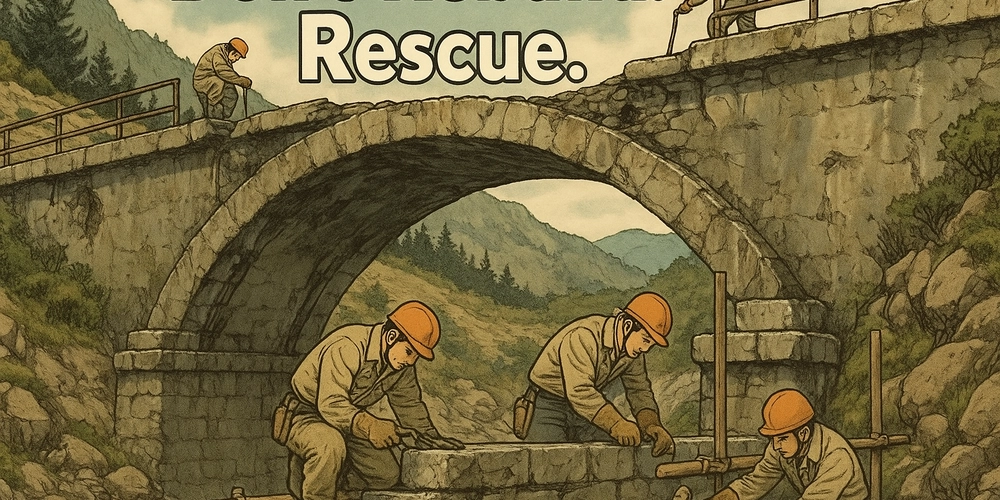5 Signs It’s Time to Rescue Your Rails App (Not Rebuild It)
Keeping a Rails app healthy gets harder the longer it runs. If you've ever thought, "Maybe we should just rebuild," you're not alone. But a rebuild isn't always the best path. It’s a tempting thought - wipe the slate clean, start fresh. But in my experience fixing legacy Rails apps, a full rebuild is often unnecessary, risky, and expensive. Most apps don't need a total rebuild. They need a focused, strategic rescue. Here are five clear signs it's time to stabilize your Rails app — without blowing it up. 1. You Fear Deploying (Not New Features) If hitting “Deploy” feels like spinning a roulette wheel, you have a problem. Stable apps make shipping new features easy and low-stress. If your team hesitates to push even small updates, the issue isn’t the app's architecture — it’s hidden fragility. A rescue sprint focuses on restoring deploy confidence without rewriting every controller. 2. Outdated Gems Everywhere (But Core Logic Still Works) Seeing dozens of outdated gems can be overwhelming. But if the core business logic — your critical workflows — still runs smoothly, there’s no need to throw everything away. Systematic upgrades and careful patching often extend the life of a Rails app by years without the chaos of a ground-up rewrite. I’m not gonna lie - some gems are non-trivial to update, especially if they jump major versions. But ‘newer’ is not always better. We are not dealing in theory, we are dealing with your app. So it might be fine to fork an old version of a gem and make sure it works with newer Ruby and leave it at that. You don’t have to be on the latest and ‘greatest’ of every gem. 3. Background Jobs Are Failing, But Patchable Jobs timing out, retries clogging Sidekiq, or random failures happening overnight? These issues are serious but usually fixable with targeted debugging and better monitoring. You don’t need a new app. You need an experienced eye on your queues and retries. Make sure you’re logging the errors verbosely enough and just pick them off one at a time. I’ve dealt with issues that caused thousands of errors an hour and it turned out to mostly be the same error. Slow and steady wins the race. 4. Performance Has Degraded Slowly Over Time If your app has gotten slower year by year — not because of traffic spikes, but because of database growth, index decay, or outdated queries — that’s normal. Most performance degradation can be solved with indexing, caching, and refactoring key queries. It doesn’t require rewriting the entire app from scratch. Sometimes you can benchmark, sometimes you can’t. Not in the real world. Try to find slow calls. Write your own logging timers if you need to. Then focus on the worst offenders. Also - bonus tip! - see if you need those calls at all! So much redundancy in legacy apps because over time people write the same thing many different ways. 5. New Developers Can Onboard (With Some Help) If a new developer can still figure out how the app works after a few days — even if it’s messy — your app is salvageable. Complete rewrites usually happen when nobody can understand what’s going on anymore. If onboarding is painful but possible, a rescue is a smarter investment. When Rescue Beats Rebuild Rebuilding always sounds exciting — until the costs, delays, and lost stability start adding up. If you’re seeing these signs in your Rails app, a focused rescue sprint might be the right move. I offer short, targeted Rails Rescue Sprints designed exactly for this situation. You can find out more here → https://realliferails.com/ruby-on-rails-rescue-sprint/

Keeping a Rails app healthy gets harder the longer it runs.
If you've ever thought, "Maybe we should just rebuild," you're not alone.
But a rebuild isn't always the best path.
It’s a tempting thought - wipe the slate clean, start fresh.
But in my experience fixing legacy Rails apps, a full rebuild is often unnecessary, risky, and expensive.
Most apps don't need a total rebuild.
They need a focused, strategic rescue.
Here are five clear signs it's time to stabilize your Rails app — without blowing it up.
1. You Fear Deploying (Not New Features)
If hitting “Deploy” feels like spinning a roulette wheel, you have a problem.
Stable apps make shipping new features easy and low-stress.
If your team hesitates to push even small updates, the issue isn’t the app's architecture — it’s hidden fragility.
A rescue sprint focuses on restoring deploy confidence without rewriting every controller.
2. Outdated Gems Everywhere (But Core Logic Still Works)
Seeing dozens of outdated gems can be overwhelming.
But if the core business logic — your critical workflows — still runs smoothly, there’s no need to throw everything away.
Systematic upgrades and careful patching often extend the life of a Rails app by years without the chaos of a ground-up rewrite.
I’m not gonna lie - some gems are non-trivial to update, especially if they jump major versions. But ‘newer’ is not always better. We are not dealing in theory, we are dealing with your app. So it might be fine to fork an old version of a gem and make sure it works with newer Ruby and leave it at that. You don’t have to be on the latest and ‘greatest’ of every gem.
3. Background Jobs Are Failing, But Patchable
Jobs timing out, retries clogging Sidekiq, or random failures happening overnight?
These issues are serious but usually fixable with targeted debugging and better monitoring.
You don’t need a new app.
You need an experienced eye on your queues and retries.
Make sure you’re logging the errors verbosely enough and just pick them off one at a time. I’ve dealt with issues that caused thousands of errors an hour and it turned out to mostly be the same error. Slow and steady wins the race.
4. Performance Has Degraded Slowly Over Time
If your app has gotten slower year by year — not because of traffic spikes, but because of database growth, index decay, or outdated queries — that’s normal.
Most performance degradation can be solved with indexing, caching, and refactoring key queries.
It doesn’t require rewriting the entire app from scratch.
Sometimes you can benchmark, sometimes you can’t. Not in the real world. Try to find slow calls. Write your own logging timers if you need to. Then focus on the worst offenders. Also - bonus tip! - see if you need those calls at all! So much redundancy in legacy apps because over time people write the same thing many different ways.
5. New Developers Can Onboard (With Some Help)
If a new developer can still figure out how the app works after a few days — even if it’s messy — your app is salvageable.
Complete rewrites usually happen when nobody can understand what’s going on anymore.
If onboarding is painful but possible, a rescue is a smarter investment.
When Rescue Beats Rebuild
Rebuilding always sounds exciting — until the costs, delays, and lost stability start adding up.
If you’re seeing these signs in your Rails app, a focused rescue sprint might be the right move.
I offer short, targeted Rails Rescue Sprints designed exactly for this situation.
You can find out more here → https://realliferails.com/ruby-on-rails-rescue-sprint/


















![How to contribute to the Flutter engine [Windows]](https://media2.dev.to/dynamic/image/width=800%2Cheight=%2Cfit=scale-down%2Cgravity=auto%2Cformat=auto/https%3A%2F%2Fdev-to-uploads.s3.amazonaws.com%2Fuploads%2Farticles%2F6l3gn3x9ffod81mk92vm.png)























































